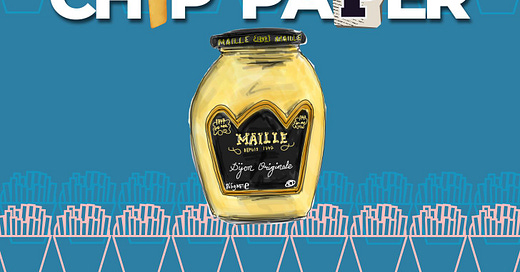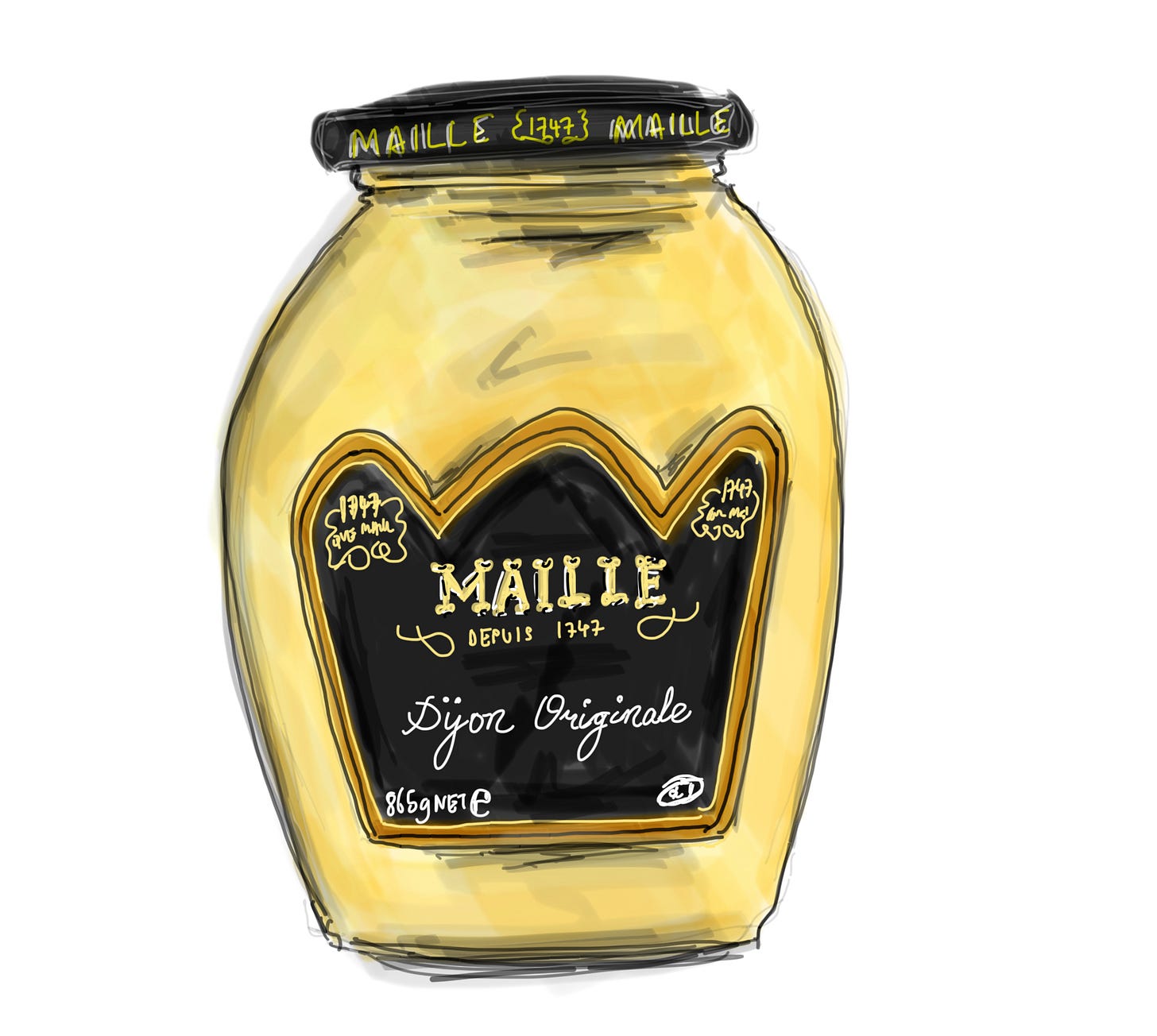Condiment Curiosity: Maille Dijon Mustard
Seventh in the series, can you believe a city is known the world over for a single condiment!? But how did Dijon mustard come to be and what's Maille got to do with it?...
Can you think of any other city the world over known for a single condiment? Dijon, the capital of France’s Burgundy region, is famed for many things but the mustard that bears its name has almost overshadowed it (or placed it on the map, depending which lens you look from). Add in the fact one of the world’s most famous Dijon mustards actually has its roots in Marseille and Paris, not Dijon, and the whole story gets a little complicated, so let’s simplify it succinctly… here’s how Maille became the world’s best-known Dijon mustard brand.
This is Condiment Curiosity, our series of deep dives on Substack into iconic cupboard staples, tracing the eclectic history of enduring food brands found on many supermarket shelves. If you missed any of our six previous featured condiment brands (Aromat, Sriracha, Salad Cream, Branston Pickle, Marmite/Vegemite, TABASCO) you can click back and catch up after this!
Origins of Maille: Vinegar To Beat The Plague & Pivot To Mustard
Nowadays we tend to know Maille for its top-quality mustards but it was actually an established vinegar producer long before that. Antoine-Claude Maille, found fame in 1720 as a vinegar distiller who invented “The Vinegar Of The Four Thieves” (also known as ‘Marseille Remedy’ or ‘Thieves’ Oil’), a unique, herbal concoction of vinegar steeped with a combination of herbs and aromatics — sometimes up to a dozen but later more streamlined into four key aromatic additions.
Maille marketed this as a treatment for bubonic plague which had particularly ravaged France’s second city of Marseille during its final outbreak in 1720, known as the Great Plague of Marseille. His product was “widely regarded as saving the inhabitants of Marseille” as it was said to “ward off infection, and consequently curtailed its spread,” as told by Michael Harlan Turkell over at Vinegar Professor.
His son, also called Antoine-Claude Maille, then continued his craft and turned it up a gear, moving the base from Marseille to Paris and incorporating as a company in 1747. It’s at this point that the focus shifts from producing vinegar to mustard and he opened a flagship boutique on rue Saint-André des Arts. Soon he found favour with Louis XV, supplying his court directly with his version of Dijon mustard and vinegars. Within 15 years word had spread and successive supply to Louis XVI, then Louis XVIII, Charles X and Louis-Philippe I and to other European dynasties, courts and royal families in Austria, Hungary and Russia.
By 1800 the company was producing 20 different types of mustard and 50 different vinegars. Maille sold the business to an associate, André-Arnoult Acloque, that same year and died just a few years later in 1804, but that’s not where the lineage is lost.
Maille’s own son, Robert, found a way back into the business in 1819, becoming a partner alongside Alcoque’s son Andre-Gabriel and the two set their sights on growth before Robert eventually bought-out Alcoque. In 1880 the Maille brand’s competitor Grey-Poupon, which was established 15 years prior in 1866 and had revolutionised the manufacturing process by speeding up production of its product, took over the Maille company.
During World War II, Maille Dijon mustard continued to be produced and slightly adapted its recipes during ingredient shortages and rations to safeguard the brand's survival. Maille was pretty much the same for the next 100 years, until in 1988 the iconic ‘whiskey’ glass, called ‘Flamenco’, was introduced. At its height it sold 8 million jars of this unique style a year.
Several changes of ownership have occurred over the last 100 years. Unilever took a significant stake in the business in the 1990s and by 2000 had taken over the company as a subsidiary. Unilever also owns several other iconic condiment producers including Knorr, Hellmann’s, Marmite and Colman’s, amongst many, many other food brands.
Since The Middle Ages: Dijon Mustard Pre-Dates Maille
But Maille didn’t invent Dijon mustard. You already know the company was first focused on vinegars and mustard of various kinds had been gracing the tables of the rich and royalty in Burgundy since the Middle Ages. Historically many varied styles of mustard were served, made from differing ingredients and processes with ‘Brassica Juncea’ brown mustard seed. Most commonly the liquid base was verjus - the pressed juice of unripe winemaking grapes - and it was reportedly Maille which first replaced verjus as a base with distilled vinegar, which was cheaper and offered longer-life benefits for the product. Vinegar enlivens products with sharpness but can actually temper spiciness, and Maille’s Dijon style of moutarde was smoother, more delicate and less spicy than others, which earned it favour with the rich and powerful.
Keep reading with a 7-day free trial
Subscribe to Chip Paper to keep reading this post and get 7 days of free access to the full post archives.





